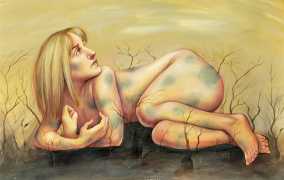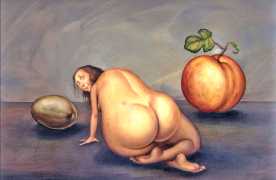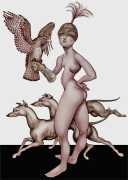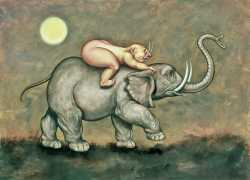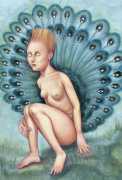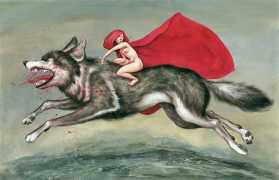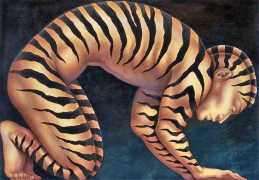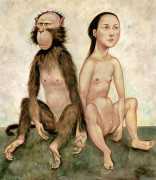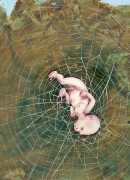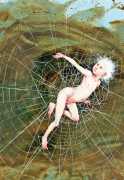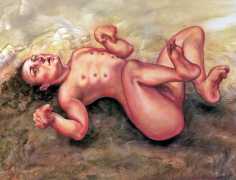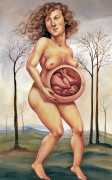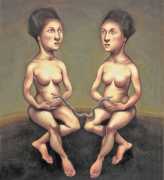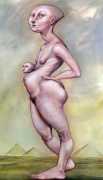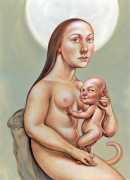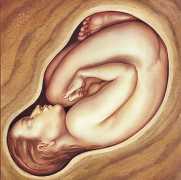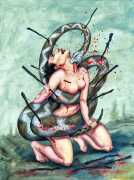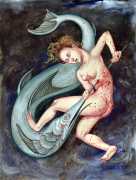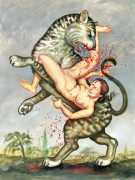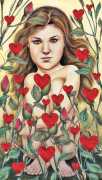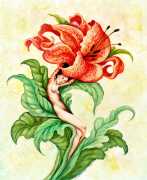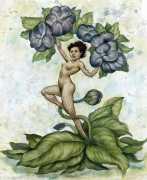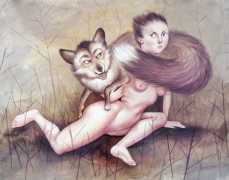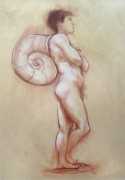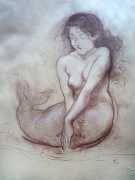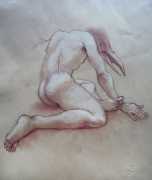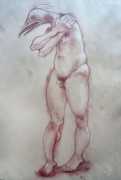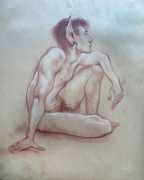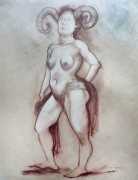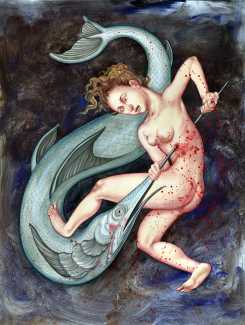
Anita Kunz has always included images of human–animal interactions in her extensive portfolio, and here we show a selection of her powerful imagery. Some was made following a specific commission, but most flows freely from her vivid imagination. She puts her influences down to several important things. ‘My first, and one of my biggest, influences ever, was my uncle Robert Kunz. He was an illustrator, and his motto was “art for education”. I learned that it would be great if art could serve some kind of a purpose or be useful in some way. It didn’t just need to be decorative, it could perform a function. He was a huge inspiration. Not only was he an illustrator, he was just a quintessential artist. He did weavings, and he made architectural friezes, and landscapes. What I loved about him is that he also influenced my worldview – he had a studio on a lake, he was an environmentalist, and he knew the names of all the animals.’
She also believes that family history plays a part. ‘We come from a long line of people from Transylvania. In the twelfth century there was a group of German people who went and settled in Transylvania, which, you know, is Romania – a lot of Germans went and made their homes there. They were farmers and peasants and I think they were given a pretty good deal. Just recently I have been doing a bit more research into it and I find it really fascinating. I went there a few years ago and it’s beautiful and rugged, and the mountains are just beautiful.’
And around the time of Covid Kunz was volunteering at a monkey sanctuary, the only primate sanctuary in Canada that rescues pet monkeys and monkeys who have spent their lives in labs, giving them a good retirement. ‘For me it was just really interesting because I love drawing monkeys, they’re so human-like and we’re so monkey-like. In the sanctuary there’s a white-capped capuchin monkey that they named Pockets Warhol because he looked like Andy Warhol with his hair – and Pockets Warhol really likes painting. They put out paint for him and he makes paintings. The sanctuary sells them, and he really helps to keep it going. So I wondered, what would happen if I collaborated with him, just for fun to see what would happen. And so I gave him a painting and he started working on it. It was a painting of a woman and a monkey, and he looked at it and he painted over it and I think he improved it. But then the very last thing he did was he put a slash over the woman’s head. And I thought, whoa, that’s a political comment isn’t it?’



